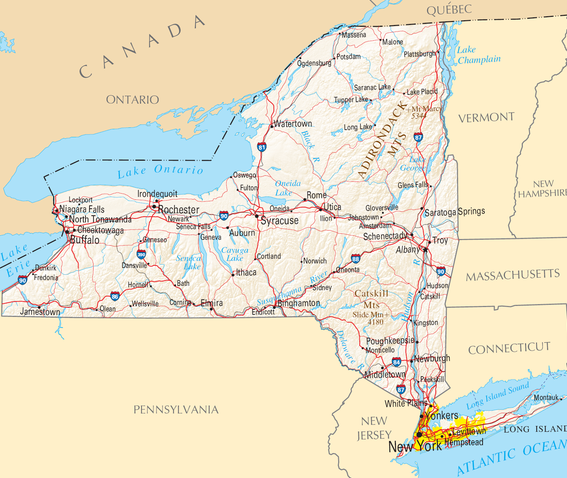In 2013, the Centers for Disease Control and Prevention (CDC) indicated that the number of Americans diagnosed with Lyme disease each year was estimated at around 300,000. This is a 10-times increase over the more than 30,000 cases of Lyme disease are reported to CDC, making it the most commonly reported tick-borne illness in the United States.

A recent Centers for Disease Control and Prevention (CDC) Surveillance Summary reported for the period of 2008-2015, a total of 275,589 cases of Lyme disease were reported to CDC (208,834 confirmed and 66,755 probable).
In addition, the report noted that 14 US states were met the criteria for classification as states with high incidence, New York being among them.
New York State health officials released the latest numbers on infectious diseases in the state in the Communicable Disease in New York State cases reported in 2016, which includes the three common tick-borne infections–Lyme disease, Babesiosis and Anaplasmosis–all contracted from the same blacklegged tick.
Related: We Can Prevent Half of Fatal Infections from Blood Transfusion by Screening for Babesiosis
What we see, and not altogether surprisingly, is significant increases in these tick-borne bacterial and parasitic infection in the Empire State during the past decade.
In 2016, the number of Lyme disease cases reported in New York was 6597 (7543 including New York City). This compares with 2006 when 4155 (4459 wNYC) Lyme cases reported in 2006.
Related: Tickborne diseases: It’s not just Lyme disease
We see the other tick-borne infections also show an increase during the past decade. In 2016, the parasitic infection, Babesiosis was reported as 430 (481 w/NYC) cases, while in 2006, 191 (231 w/NYC) was the tally.
Anaplasmosis, not officially reported until 2010 saw a rise from 220 (231 w/NYC) cases that year to 733 (775 w/NYC) last year.
The counties reporting the most Lyme disease in 2016 included Suffolk (644), Orange (531) and Rensselaer (497).
Related:
- Lyme and tick-borne diseases in New York: State Senators call for statewide action plan
- Powassan and Lyme disease: Chuck Schumer calls for Feds to ‘step up their game’
- Powassan virus case reported in Dutchess County, 4th case in NY this year
- Tickborne diseases: Laboratory diagnosis and treatment
- LymeDisease.org’s Lorraine Johnson discusses MyLymeData and a new NSF grant
- Lyme disease treatment: Some thoughts
- The history behind the Lyme disease controversy and what’s new in Lyme research
- A look at the differences in geographical distribution of Lyme disease
- A new Lyme disease test: Dr Richard Marconi discusses the GLD Test
- Lyme disease, Stevia and the quest for better treatments
- Lyme disease: Borrelia biofilm in the body demonstrated
- Lyme disease: The Borrelia mayonii discovery
- Lyme: Q & A with Paul Auwaerter, MD
- Binghamton: County health officials remind public about Lyme disease


